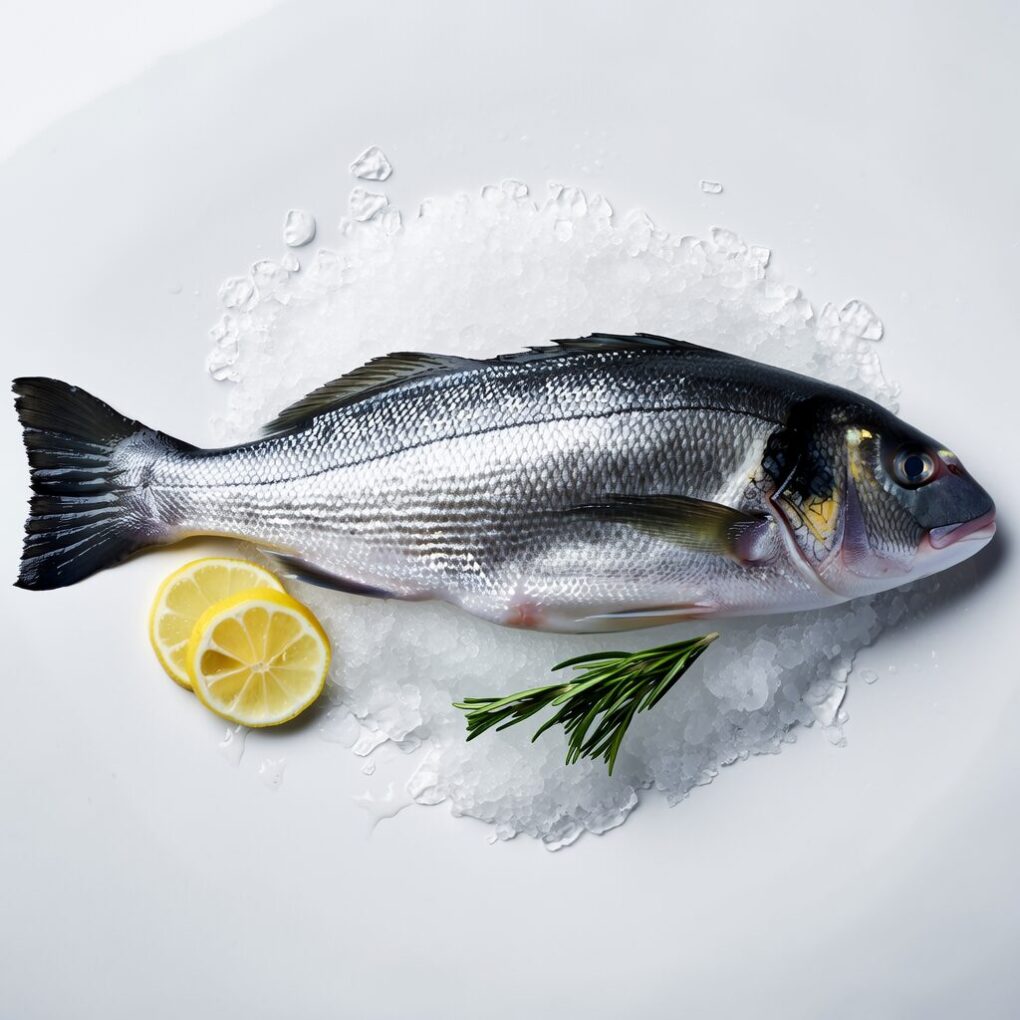Welcome to our comprehensive guide to deep water fishing. We will explore the nuances of this thrilling angling activity. This guide is for both the seasoned angler and the beginner who wants to improve their skills. It will give you valuable tips and insights to make your next experience of deep water fishing successful and memorable.
Understanding Deep Water Fishing
This chapter will introduce you to deep water fishing and explain why it’s so popular among anglers. We’ll also cover the equipment you need to start and the differences between shallow and deep water fishing.
What is Deep Water Fishing (DWF)?
Deep water fishing is the act of angling on bodies of water that have significant depths such as oceans or lakes. It involves focusing on species that are found in deeper areas, away from shorelines and shallow areas. Deep water fishing is different from traditional methods of fishing that target species in shallow water. It requires specialized equipment, knowledge, and techniques.
Deep Water Fishing: Benefits
Deep water fishing has many advantages over shallow water fishing. It allows you to access a greater variety of species. Many of them are larger and harder to catch. The solitude and tranquility that deep water fishing offers can be a welcome break for anglers who are tired of the crowded shorelines. In addition, the chances of landing trophy-sized species are much higher in deeper waters.
Essential Equipment for Deep Water Fishing
It is important to have the right equipment before you embark on your deep-water fishing adventure. Some essential equipment includes:
- Rod and Reel – Choose a rod that is sturdy and a reel that can handle heavy lines and lures.
- Line: Select a braided line of high quality with low visibility and excellent strength.
- Sinkers: There are many types of sinkers that you can use to help your bait reach its desired depth.
- Baits and lures: Buy a variety of baits and lures that are suited to deep-water species.
- Electronics: Use GPS devices and fish finders to navigate safely and locate fish in deep water.
Differences between shallow water and deep water fishing
While shallow water fishing is aimed at catching species in shallow or near-surface areas, deep water fish are those that live in deeper waters. Techniques, equipment, and bait are also different. Light tackle and floating lures are used in shallow water fishing while heavier tackle and sinking lures are needed for deep water fishing.
Chapter 2: Deep Water Fishing Techniques
You now have a solid understanding of deep-water fishing. It’s time to learn the different techniques that are effective in this angling discipline. This chapter will provide you with valuable insight into the most popular deep water fishing techniques used by experienced anglers.
Bottom Fishing
Bottom fishing is an important technique for deep-water angling. It is used to catch species that live near the seabed. This involves dropping your lure or bait to the bottom of the water and waiting for fish. This technique requires patience, as you might need to wait a long time before you get a bite. To keep your bait in place, you need to use heavy sinkers with sturdy rigs.
Trolling
Trolling is a great way to cover large areas of water while attracting fish that are actively feeding on baitfish or following them. It involves dragging lures or bait behind a boat that is moving, to mimic the movements of prey. You can increase your catch by adjusting the trolling speed, using diving lures, or baits with built-in rattles.
2.3 Jigging
Jigging can be used in shallow or deep water. Vertically presenting a jig, lure or bait to imitate an injured baitfish or prey species. Lift and drop the lure rhythmically to trigger predatory strikes. This technique is a favorite of experienced deep-water anglers because it requires finesse and practice.
2.4 Drift fishing
Drift fishing is the process of letting your bait or lure drift with the current. This allows you to cover a large area of water during the drifting. This technique is especially effective when fishing near large structures such as drop-offs or reefs where fish tends to congregate. This technique requires you to keep a close watch on your line, and adjust your drift in order to maximize coverage.
Chapter 3: Safety Measures & Best Practices
While deep-water fishing can be extremely rewarding, it’s important to prioritize safety. This chapter will outline some safety measures and tips every angler should follow when venturing into deeper waters.
3.1 Weather Conditions & Safety Precautions
Be sure to check the weather before you embark on a deep-water fishing trip. Pay attention to the forecasts, wind speed, and sea conditions. Avoid fishing during storms and rough waters. Make sure you have all the necessary safety equipment on board, including life jackets, communications devices, and first-aid kits.
3.2 Boat Maintenance and Navigation
Regular maintenance is essential for safe and efficient fishing trips. Before each trip, inspect your boat to ensure that the engine, fuel system, and safety equipment is in good working order. You should familiarize yourself with your intended fishing area, including any shallow areas, obstacles, and navigational aids. Navigational tools such as GPS devices and nautical charts can help you on your journey.
3.3 Handling and Release Techniques
Fishing in deep water often involves catching fish highly prized because of their size or rarity. Handling these fish with care is crucial to minimize any harm and maximize the chances of their survival after release. You should wet your hands prior to touching the fish in order to protect its delicate slime coating. Use the appropriate release tools such as circle hooks or de-hookers to minimize injury. Release fish gently, giving them time to recover.
Leave No Trace
In order to preserve the beauty and sustainability our waters, it is important to respect the environment and leave no trace behind. Dispose of all litter, including fishing line and hooks. Catch-and-release techniques are the best way to avoid damaging impacts on the ecosystem. Learn about local regulations and guidelines to ensure you comply with bag and size limits.
Chapter 4: Popular Deep Water Fishing Destinations
This chapter will take you to some of the world’s most popular deep-water fishing destinations. These destinations offer a variety of opportunities for anglers to test their skills, including serene lake excursions and breathtaking oceanic adventures.
The Florida Keys (United States)
The Florida Keys, also known as the “Sportfishing Capital of the World,” offer a variety of deep-water angling options. This tropical paradise is a haven for deep water fishing enthusiasts. From chasing trophy-sized Billfish in the Gulf Stream, to battling mighty tarpons in the shallow backcountry.
Cape Town, South Africa
Cape Town, nestled in between the Indian Ocean and Atlantic Ocean, offers world-class deep-water fishing. The waters are rich in nutrients, which attract a variety of game fish including yellowfin and marlin. This vibrant city offers an unforgettable angling adventure with Table Mountain as the backdrop.
The Great Barrier Reef in Australia
The Great Barrier Reef, which stretches over 2,300 km, is a UNESCO World Heritage Site renowned for its incredible biodiversity. This aquatic wonderland is a paradise for deep-water fishing enthusiasts. They can target species such as coral trout, Spanish mackerel, and giant trevally. This destination is a paradise for anglers with its breathtaking underwater landscapes.
Sognefjord, Norway
The Sognefjord is located in the heartland of Norwegian fjords and offers a unique experience for deep-water fishing in a beautiful natural setting. This fish-rich fjord offers ample opportunities to target Atlantic Cod, Halibut, and many other iconic Northern European species. This destination is a true anglers’ paradise, with its breathtaking scenery and tranquil atmosphere.
Chapter 5: Conclusion
Deep water fishing can be an exciting and thrilling pursuit for anglers at all levels. You can embark on unforgettable adventures in deep water fishing by mastering the fundamentals, learning the techniques and following safety precautions. Respect the environment, protect the integrity of the water, and enjoy the thrills that deep-water angling offers. Plan your next deep-water fishing trip to create lasting memories.




